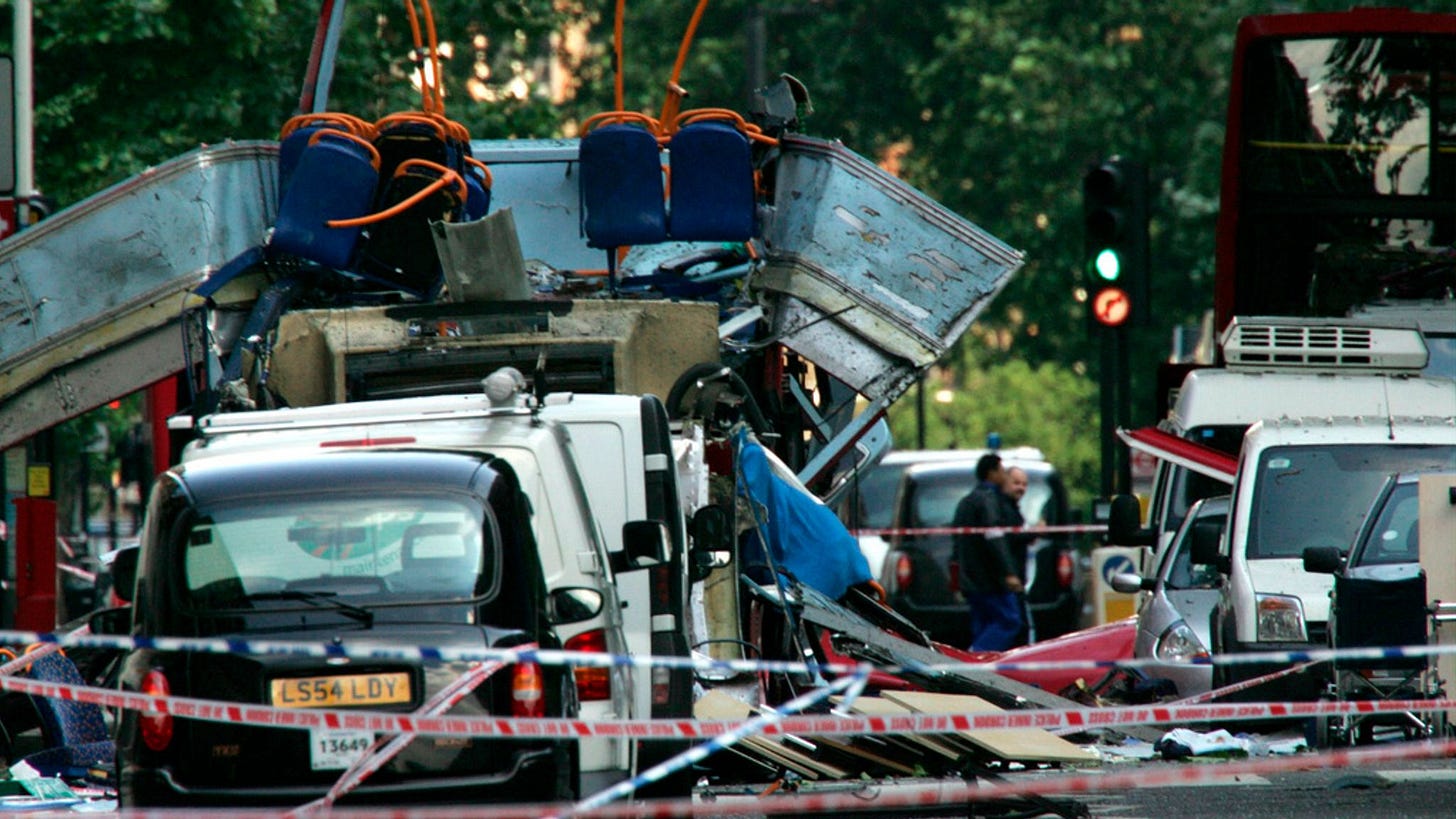When Surveillance Crossed The Line: 7/7, The State, and the News of the World Shame
History Remembers - On This Day in 2005 and 2011
Truth Tainted by Intrusion
Twenty years ago today, at 8:50 a.m., a series of coordinated explosions tore through London’s transport network, killing 52 and injuring more than 700. It was a brutal awakening in the post-9/11 world, a moment when Britain’s sense of security was not just rattled, but redefined. The legacy of that morning is carved into national memory, in the faces of the lost, in the trauma of survivors, in the grief that still hangs over families.
But six years to the day after the 7 July bombings, another calamity unfolded. Quieter, less bloody, but no less revealing of the nation’s moral drift. On 7 July 2011, the News of the World, once Britain’s most-read newspaper, announced its closure. Not for lack of readers or irrelevance. It was shuttered by shame. Its downfall was triggered by the exposure of its systematic phone hacking operations, a grotesque betrayal of public trust. Among the most appalling revelations was the alleged targeting of the grieving families of 7/7 victims.
That decision, if made consciously, did not merely overstep a boundary. It desecrated the very foundation of responsible journalism. In its pursuit of sensation, the paper turned its ear to the voicemails of the bereaved, as if human tragedy were a marketable asset. Today, as we mark the anniversary of a national wound, we must also confront the truth that some, under the guise of the free press, chose to mine that wound for profit.
Surveillance Without Scrutiny
The reach of surveillance, whether by press or government, is a powerful force. Both draw on the same reservoir of information. Both claim to serve the public interest. Yet when unchecked, both can corrode the very freedoms they profess to protect.
In 2005, Mohammad Sidique Khan was known to MI5. He had appeared in surveillance operations not once, but twice. Still, he was never stopped. Not through apathy, but because British intelligence was swamped. There were louder alarms, more immediate threats, more boxes to tick. Khan slipped through because, despite being seen, he was not understood. The problem was not blindness, but blur. Not ignorance, but fog. There was no clear intelligence. That word, clear, has haunted the security services ever since.
We have become more connected, more monitored, more reactive. Yet the threat has shifted. The model of terror has mutated. Today, it is rarely a hierarchy. There are no commanding cells, no long-term plots. Instead, we face something more ephemeral, more chaotic. Individuals radicalised in silence. Lone actors burning with grievance. Violence born from sudden rage. Sometimes ideology, sometimes none at all.
Aftermath Without Closure
Operation Overt, the major plot disrupted in 2006, showed that early intervention can work. Surveillance, used with precision, can save lives. Martyn’s Law, now in development, aims to further strengthen public protection through preparedness. But no policy, no tactic, no countermeasure can promise full safety when the threat refuses to follow form.
In that landscape, the lines between vigilance and intrusion grow thinner. Undercover officers roam digital forums. Algorithms monitor online speech. The state, like the media once did, leans heavily into prevention through penetration. The difference is one of intent. But the methods often rhyme.
When News of the World fell, it did so because it forgot the difference between inquiry and invasion. When the press begins to behave like an intelligence agency, but without the accountability or regulation, the damage is profound. It is not just a scandal. It is a collapse of credibility.
The hacking of Millie Dowler’s phone was the turning point. But what truly repelled the nation was the thought that the same methods may have been used on the families of those killed on 7 July 2005. Those people had already suffered the unthinkable. To have their grief repackaged as content was unconscionable.
Prepared but Not Protected
Two decades since 7/7, Britain is stronger in many ways. Laws are tighter. Interventions happen earlier. Coordination between regional counterterrorism units has vastly improved. But we are not safer in the way we once imagined. We are simply more braced for impact. More agile. More able to spot the glint of the knife before it is raised.
The threat has no timetable. No leadership. No interest in symbolic targets. It erupts in arenas and bridges, on streets and in schools. It wears no uniform and often leaves no manifesto. Its power lies in its spontaneity, in the ordinary mask it wears until the very last second.
This is the new challenge. It is not a war in the old sense. It is a storm of disaffection, anger and opportunistic extremism. The targets are random. The motives often vague. But the damage is always intimate. Always human.
So, are we safer? No. We are simply better armed for chaos.
Legacy and Reckoning
Today, we remember the 52 who died, the hundreds injured, the families torn open by grief. We remember those who ran towards danger. We remember the drivers, the medics, the commuters who became first responders. We remember the resilience of a city tested in fire.
And we must also remember how quickly our systems can turn cruel when they forget their purpose. The press is there to hold power to account, not to treat mourning as opportunity. Intelligence is there to protect, not to drown in ambiguity.
The closure of News of the World was necessary. But it was also instructive. It showed what happens when institutions, be they media or government, lose sight of the human beings at the centre of their work.
We are more watched now than ever. But watching is not the same as seeing. And surveillance is not the same as understanding.
Let us hope, on this solemn anniversary, that we have learned to tell the difference.



